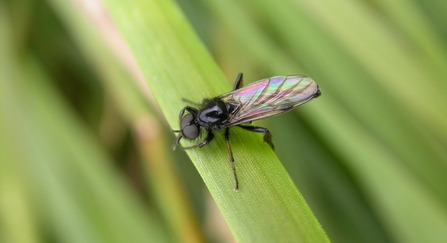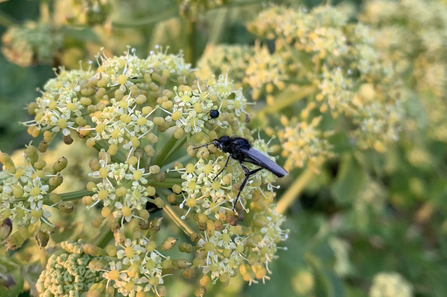Now is the time to watch the air as thousands of long, shiny, black flies take to their wings in search of a mate. Distinctive thanks to their long black dangly legs, St Mark’s Flies otherwise known as hawthorn flies or, officially, Bibio marci, have a very short adult life cycle; and it is the timing of their adult life and busy mating activities that gives rise to their names.
The St Mark's Fly
St Mark's fly - Guy Edwards 2020 vision

St Mark's Fly - Bruce Shortland
Their fleeting time in the air begins on or around St Mark’s Day on April 25th, with the smaller males appearing first to drift in swarms at head height, with their long legs dangling beneath them along woodland edges, hedgerows, fields and wetlands in a bid to attract the females. Their gentle, almost lazy movement – they will often land on any objects in their way, including fence posts and people and are rather sluggish at rest - belies the ‘rush’. They are in flight for approximately only one week and after mating, the females lay their eggs in the soil and die quickly afterwards. It is a fascinating flurry of languid activity, which is all over by the time the hawthorn’s pale pink blossom is fully out in mid-May.
So, why not take some time to marvel at the swarms of hawthorn or St Mark’s flies that will be wafting around over the next few days. Not only are they enjoying an all too brief moment of in-flight action, but as they feed on nectar, they are also fulfilling their role as important pollinators of our fruit trees and crops.

St Mark's Fly
